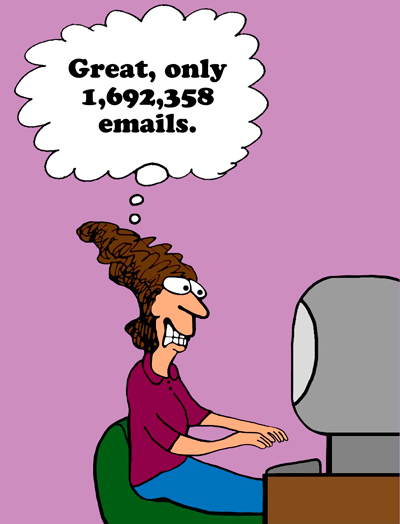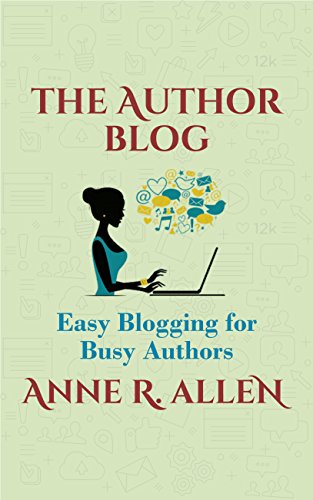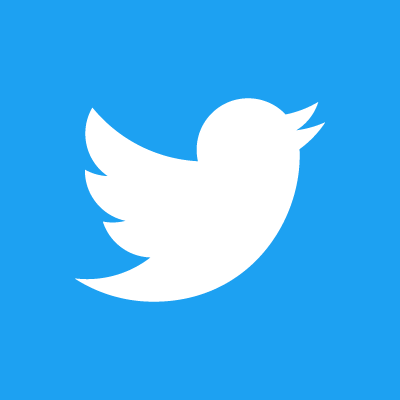“The one with the biggest email list wins” is the current mantra of pretty much every book marketer on the planet. The author newsletter is supposed to be the most important weapon in your book marketing arsenal.
Marketing experts tell authors their #1 goal should be to collect as many email addresses as possible for the purpose of sending our victims fans weekly or even daily doses of our spam news.
This week Kristine Katherine Rusch wrote a great in-depth post on newsletters. She pointed out there are two types of newsletters that authors are using today: the old school, chatty letter that reads like the newsy Christmas letter you get from Aunt Susie. Those newsletters appeal to your established fans who know your characters, and want to know what’s coming up and what’s going on with you personally.
Then there’s the newer type of newsletter which is like an advertising circular that aims at getting new customers. It’s all about marketing.
It’s the latter I have the most trouble with. (So does KKR) but if you’ve got a lot of marketing savvy, it may work for you. Unfortunately I personally have negative reaction aggressive marketing, so I’m not comfortable with doing it myself.
Should You Lure Newsletter Subscribers with an Obnoxious Pop-up…or Five?
One of the tenets of the newsletter religion is that you MUST block the content of your website with a pop-up subscription sign-up, so nobody can find out about you or your books unless they’re willing to give up their personal information to a complete stranger.
Not my favorite thing.
A few days ago I clicked on an intriguing Twitter link that took me to a blog that was blocked by at least five popups, one right after the other. I gave up at #5, but who knows–there could have been hundreds. #5 blocked the whole screen and if there was a way to close it, I sure couldn’t find it.
At that point, I no longer cared what the writer had to say. I knew everything I needed to know: the guy’s a jerk. He doesn’t care how many readers he loses as long as he can grow that email list. He only cares about numbers.
Thing is: numbers are meaningless if they don’t represent actual book buyers.
As artist John P. Weiss said on Medium last week. “It’s better to have a small but loyal list of fans than a large group of lukewarm Internet surfers who succumbed to your pop-up. Email pop-ups convert a lot of people who like to sign up for email lists. But how long before they unsubscribe and move on to the next pop-up offer?
Marketing gurus also tell you to offer free books, gift cards, and even iPads and other big ticket items for the purpose of luring people to sign up for those precious newsletters.
But as Mr. Weiss pointed out, marketers don’t seem to notice that a lot of subscribers immediately unsubscribe as soon as they get the bribe. People who sign up for tons of newsletters aren’t necessarily people who will buy your book.
So could we re-think this for a just a minute? I know people will say I’m guilty of heresy here, but is the author newsletter really the Holy Grail that marketers think it is?
The Golden Rule
As you’ve probably guessed, I don’t share this mindset. I don’t even have an author newsletter. Yes, we have a subscription function for the blog. When new posts go up on Sunday, people can get a notice in their email inbox if they subscribe.
But we don’t use the list of subscribers for anything else.
I may start a list of people who would like a heads-up if I ever finish my blogging book and/or Camilla Mystery #6. But I won’t send them a newsletter bloated with self-congratulatory verbiage and dozens of selfies. Not my style.
For me, it’s mostly a Golden Rule thing. I don’t spam unto others what I don’t want spammed unto me.
Yes, I realize pretty much everybody in the book world disagrees with me. Although I was interested to see that Katherine Rusch feels “deeply uncomfortable” when asked to join in a “build your newsletter list” campaign.
And there’s superstar author Catherine Ryan Hyde, who has sold well over a million books on Amazon in the past couple of years. On her website, Catherine says:
“For years I’ve been encouraged to keep an email list of readers, but I have always refused. I feel that emailing you to tell you I have a new book out is spamming you. So, though you give me your email address for the purpose of giveaways, I don’t save those addresses or use them for any other purpose. I put news on my website, on this blog, and on my social media pages, so you know where to find it. If you want it. That’s the key.”
It’s no wonder she’s the person who brought the expression “Pay it Forward” into our culture. She lives her own life that way.
Subscribing People to Your Author Newsletter without Their Consent Is a Bad Idea
I have to admit I have a special reason to loathe author newsletters. It’s because I get dozens a month. Last month I got 6 in one day.
I did not subscribe to any of them. I do my best to unsubscribe as soon as they arrive, but they often have no unsubscribe function (which is illegal.)
None of these missives come from authors whose names I recognize from this blog or social media—and I’ve never read any of their books. Usually they don’t even write in genres I read.
Most are addressed to my old yahoo address, which I haven’t used for years. It’s the address I used back when the Russians hacked Yahoo in 2014.
This makes me strongly suspect that these authors—or their publicists—are buying email lists from illegal sites.
Buying email lists in order to spam is a bad idea on many levels. It’s not just unethical and annoying. It’s also against the law.
The CAN-SPAM Act
Before you send out that author newsletter, it would be a good idea to read up on the CAN-SPAM Act. If you send people emails they didn’t sign up for, you are officially a spammer, and can be fined up to $40,654 per violation. That’s PER EMAIL
Yeah. Do you have that much in ready cash?
I realize you don’t think of your newsletter as spam, but the law does. It covers all commercial email, which the law defines as “any electronic mail message the primary purpose of which is the commercial advertisement or promotion of a commercial product or service.”
The law requires you to have an unsubscribe function that’s easily seen and is simple to use. Light gray letters in a flyspeck font don’t cut it. And you have to honor an unsubscribe request within 10 business days: “once people have told you they don’t want to receive more messages from you, you can’t sell or transfer their email addresses, even in the form of a mailing list”
There are additional fines if you have harvested the email address without the recipient’s permission (or bought it from a Russian hacker.)
Why risk it?
Don’t Get Flagged as a Spammer
When most people get unwanted email, they’ll send it to the spam folder. Google has a pretty good memory, and when you mark something as spam in Gmail, Google remembers. When something is sent into spam by enough people, Google will helpfully do it for us.
This means that email address will be marked as spam forever. Even people who actually want your author newsletter won’t be able to get it unless they fish it out of their spam folder.
BTW, this is also a reason not to mass-query agents and bloggers. Mass emails usually get sent to spam. Your query is reaching nobody and you’re marking yourself as a spammer. Unless you do your homework and address each agent or blogger individually, you are not only wasting your time, but destroying your own reputation.
Why Not Consider a Blog Instead of a Newsletter?
Here are the reasons I prefer a blog with a subscription signup feature rather than an author newsletter.
1) A blog can attract new customers
An author newsletter is an ad you send only to existing customers who have asked to get it. (If you’re doing it legally.) These are generally people who have already bought your book.
So unless you’re one of those speedy writers who can pop a book out every month, you’re directing your sales pitch at precisely the people who are guaranteed not to buy: the ones who already have what you’re selling.
But a blog is out there in public on the Web. Any new reader can stumble on it and learn about your book and maybe even buy one.
2) A blog is interactive.
A lively comment section is often a blog’s biggest appeal. If you respond to comments (which I strongly recommend) you can answer questions and expand on the information in the post.
An author newsletter is broadcast to a limited audience. There can’t be any discussion, except one-to-one.
Your reader can’t ask questions about your content unless they email you back. Yes, of course you can start an email conversation with every reader individually, but nobody will see your answer but that one reader.
That’s a huge waste of your time compared to open conversation on a blog that everybody can see (including Google) and everybody can join in.
3) A blog gets the attention of search engines.
Something you put in a newsletter stays in the newsletter. Search engines will never know about it. Your writing will be a secret locked up in a closed environment.
Some of the biggest breaks in my career have come from simple Google searches that picked up my blog posts. I wrote a guest post about “Bag Lady Syndrome” to promote my book about homelessness, NO PLACE LIKE HOME. An editor at More magazine was writing about the syndrome, Googled it, and contacted me for an interview. As a result, I got a featured spot in a major New York glossy magazine that targets my demographic, older educated women—and it was absolutely free. Advertising there would have cost me thousands.
If I’d written that piece in a newsletter, that never would have happened—nor any of the other publicity I’ve received when people contacted me because my blog posts came up in a Google search, from a piece in Talking Writing to an interview with American Bar Association Journal.
4) A blogpost can be shared.
I’m always disappointed when I read something great in a newsletter and realize I can’t share it with my Twitter followers or Facebook peeps. Sometimes I even go to the trouble of visiting the author’s website to see if the article is there.
It almost never is. So your piece—and the advertising attached—is forever sealed into a handful of inboxes instead of being spread around the Web.
Unless you have a paid newsletter with premium content, this does little for your bottom line.
5) It’s tough to get subscribers to an author newsletter unless you already have a blog.
How are subscribers going to find you? On your website? Websites don’t get much traffic unless they have an active blog attached. Are you going to blog regularly AND send out a weekly newsletter?
I realize why some authors are resorting to buying mailing lists. It’s miserable trying to get readers to your website if you don’t have good, fresh content to draw them. And if they’re not at your website, they aren’t going to see your subscription signup even if you have the most obnoxious pop-up in the world.
I know people do get signups through contests or giveaways on their Facebook author pages, and that can work, but it usually costs money, and as I mentioned before, people often unsubscribe immediately after getting the bribe.
So you might consider the lowly blog instead of an expensive newsletter for keeping your readers “in the loop” between books. I know blogs are out of fashion, and aggressive business bloggers have given blogs a bad name. but they’re solid workhorses that can advance your career much better than the currently more stylish newsletter.
When an Author Newsletter is Better than a Blog.
I do understand that not all newsletters are spam–far from it. I subscribe to some that are entertaining and useful and I read them carefully.
There are good reasons why newsletters work better for some authors.
1) Your audience isn’t tech-savvy
I’ve heard from some writers who find a blog doesn’t work for them at all because they write for older people who don’t understand the concept of blogs. All this demographic can do online is read and write email and maybe post photos on Facebook.
Those people need a newsletter, for sure.
2) Your content is controversial
Some content is safer to put in an email than out there on the Web. People who write about size acceptance or feminist topics are subject to horrific trolling and bullying and often prefer to use a newsletter. Ditto some medical and political content and erotica.
Recently an artist who had been displaying his work on a Blogger blog for years found his entire blog had been taken down. Blogger had received a complaint and ruled his nudes to be a violation of their TOS. They shut him down without warning.
Obviously, this would not happen with a newsletter.
3) Your author newsletter is popular but the blog never took off.
What works, works. Some authors started their newsletters long before blogs were invented. If it ain’t broke, don’t fix it. I look forward to getting C. Hope Clark’s Funds for Writers newsletter every Friday. But I hardly ever visit her blog. Her newsletter came first and that’s where I’m used to reading her content.
4) You’re afraid of hackers
Hacking happens. I’ve certainly been a victim of it. A newsletter is safer. I can’t argue with that.
5) You hate to blog
Blogging and writing for a newsletter can be a little different. Some authors find a blog schedule too inhibiting and they prefer to send casual newsletters at random times when they need a break from fiction writing.
Blogging when you hate it is always a mistake. Readers can tell.
6) You’re a freelance writer
When you write for many blogs, magazines and websites, you probably don’t want to post on a blog every week, but a monthly newsletter can tell your peeps where to find you. I get a newsletter from a writer whose work I really enjoy who has never written a book. But she writes lots of great nonfiction pieces for many magazines and websites. I enjoy getting her newsletter, which provides links to her many articles I’d never see otherwise.
What about Having Both?
Yes, I know the gurus tell authors to maintain both newsletters and blogs.
I also know that too much marketing stuff can keep you from the actual work of writing books. And it can be hazardous to your health.
If you do both, I think it’s best to focus on one or the other. Either only send out a newsletter when you have a new book out, or keep a blog on your website that you only update once a month. This isn’t just for your own sanity. It also keeps your reader from getting bored with you.
Remember that old country song, “How Can I Miss You When You Won’t Go Away?”
Don’t be that person.
Whatever path you choose, remember the reader is the most important person to consider in your decision.
by Anne R. Allen (@annerallen) April 9, 2017
Thanks to our friends Anne Allen & Ruth Harris Be sure to stop by their blog for some great advice on writing and all that goes with it!
Anne R. Allen writes funny mysteries and how-to-books for writers. She also writes poetry and short stories on occasion. She’s a contributor to Writer’s Digest and the Novel and Short Story Writer’s Market.

Ruth Harris is a million-copy New York Times bestselling author,Romantic Times award winner, former Big 5 editor, publisher, and news junkie.
Be sure to check out Anne’s book on Blogging!
An easy-does-it guide to simple, low-tech blogging for authors who want to build a platform, but not let it take over their lives.






Thank you for this. I’ve had both a blog (Bum Glue) and a newsletter (Write Now Columbus) for years, but the newsletter has been targeted to writers in a specific geographic area.
Now that my own book is out, I’m faced with the question of whether start a second newsletter for my readers. UGH!
You’re helping me think more clearly about my own likes and dislikes with newsletters and blogs. I’m not clear yet, but this gives me food for thought.
Thanks Nita- We will be adding more to this conversation shortly!